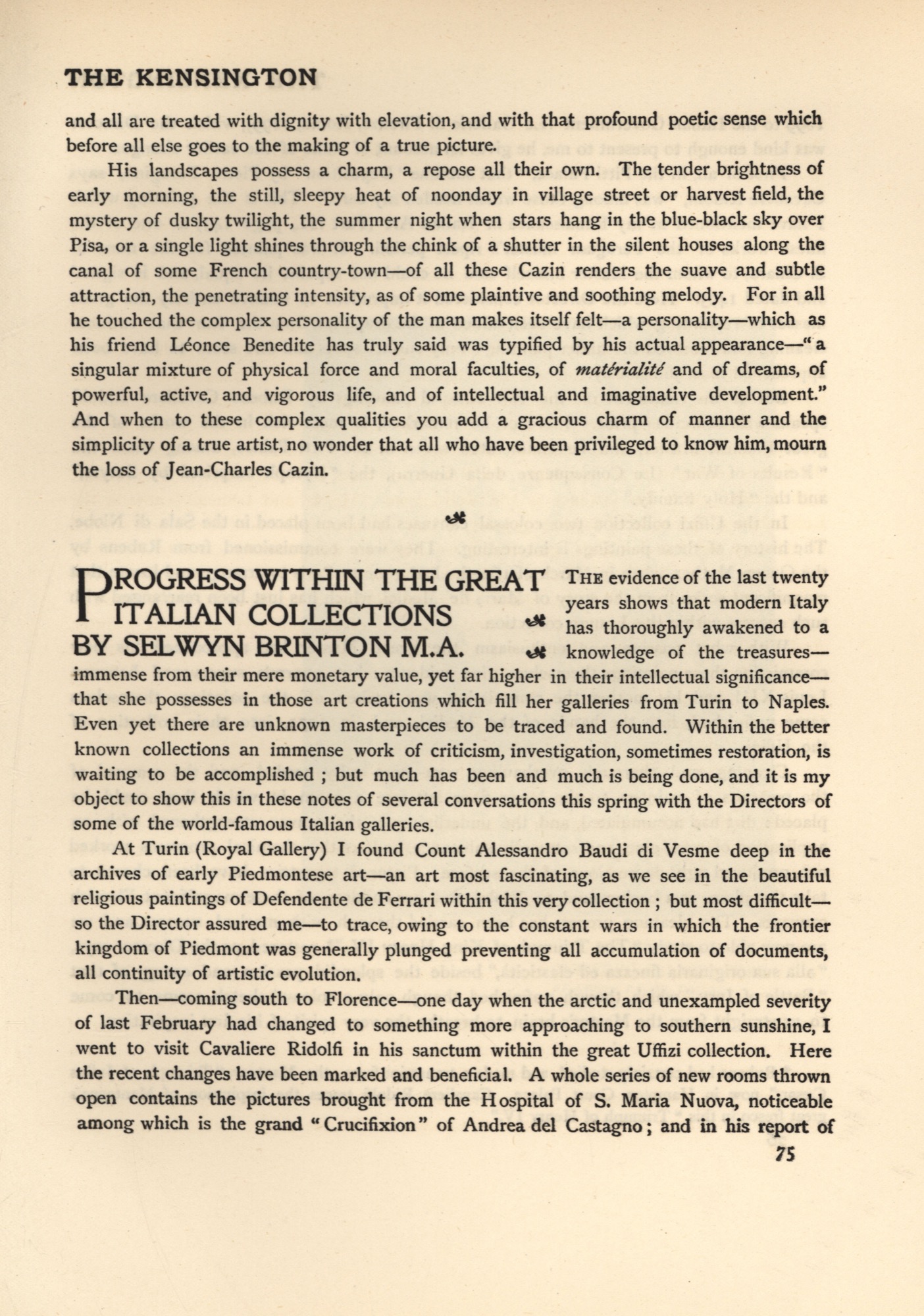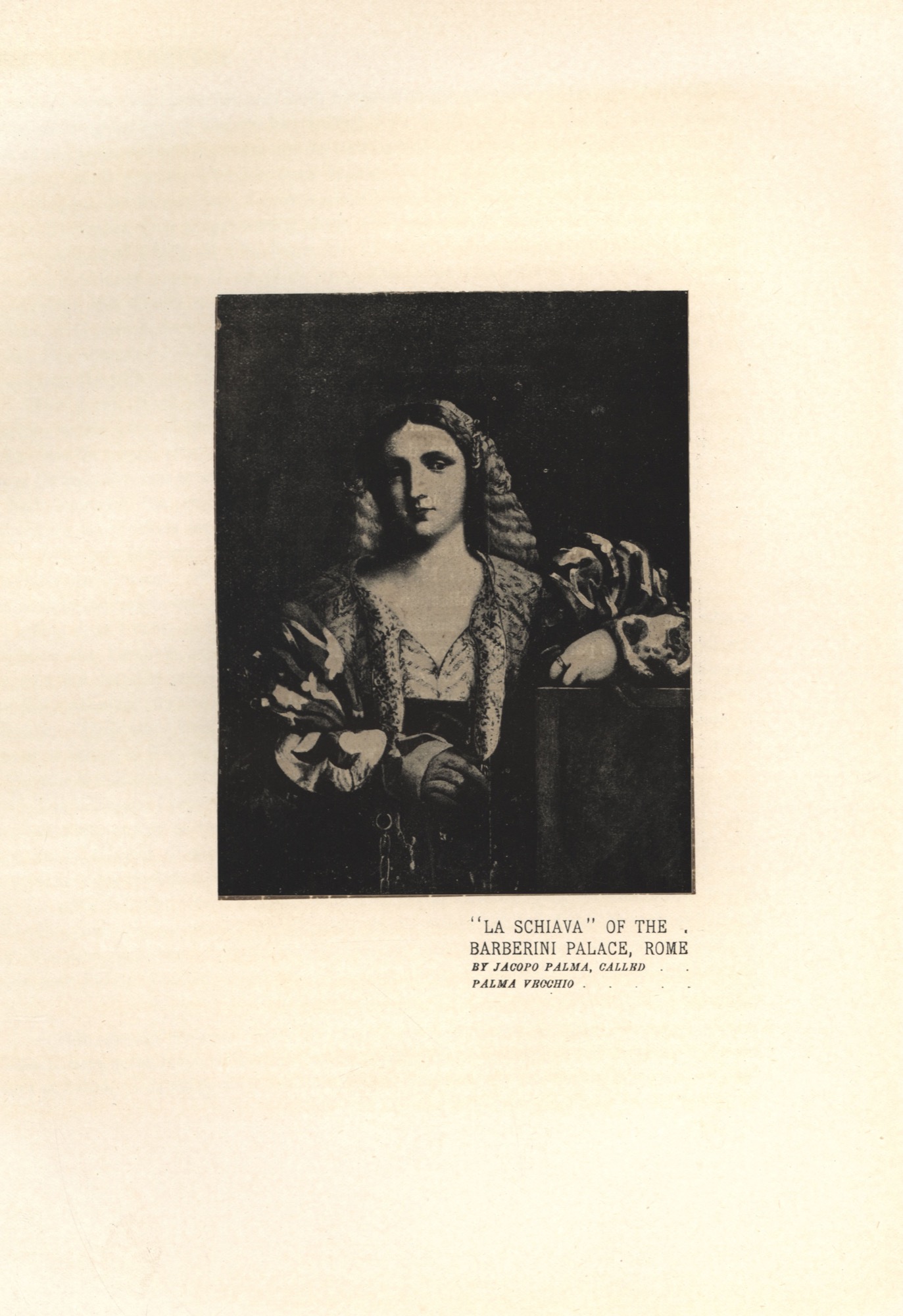3 of
You are browsing the full text of the article: Progress Within the Great Italian Collections
Click here to go back to the list of articles for
Issue:
Volume: 1 of The Kensington
| The Kensington Volume 1 Issue: 3 May 1901 Page: 75 | |||||||||||||||||||||||||||
| Progress Within the Great Italian Collections By Selwyn Brinton | |||||||||||||||||||||||||||
|

|
|
|||||||||||||||||||||||||
| The Kensington Volume 1 Issue: 3 May 1901 Page: 76 | ||||||||||||||||||||||||||||
| Progress Within the Great Italian Collections By Selwyn Brinton | ||||||||||||||||||||||||||||
|

|
|
||||||||||||||||||||||||||
| The Kensington Volume 1 Issue: 3 May 1901 Page: - | ||||||||||||||||||||||||||
| Progress Within the Great Italian Collections By Selwyn Brinton | ||||||||||||||||||||||||||
|

|
|
||||||||||||||||||||||||
| The Kensington Volume 1 Issue: 3 May 1901 Page: 77 | ||||||||||||||||||||||||||||
| Progress Within the Great Italian Collections By Selwyn Brinton | ||||||||||||||||||||||||||||
|

|
|
||||||||||||||||||||||||||
| The Kensington Volume 1 Issue: 3 May 1901 Page: 78 | ||||||||||||||||||||||||||
| Progress Within the Great Italian Collections By Selwyn Brinton | ||||||||||||||||||||||||||
|

|
|
||||||||||||||||||||||||




